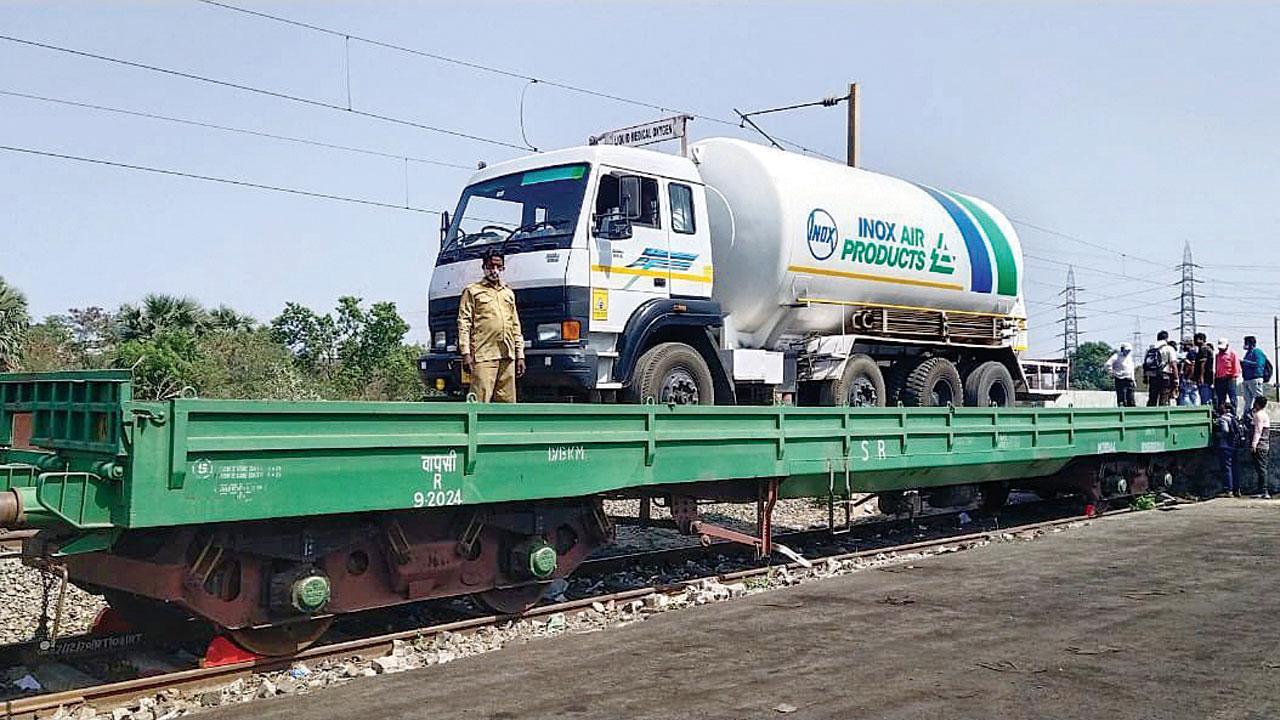From training drivers to mapping entire route, Railways went the extra mile to ensure train with seven tankers had a safe journey

Seven tankers with over 100 tonnes LMO were loaded in 10 hours and transported back to Nagpur in 21 hours
The first tanker train carrying seven tankers filled with liquid medical oxygen (LMO) from Visakhapatnam reached Maharashtra last night. The entire journey took just 50 hours. While it arrived at Nagpur at 8.10 pm on Friday, it reached Nashik on Saturday morning. The train, being volatile, needed to be planned and executed carefully, said authorities.
ADVERTISEMENT
“The railways took the movement of ‘Oxygen Express’ as a challenge and successfully ran the first one from Kalamboli to Vizag and back to Nashik. The ramps were ready overnight at Kalamboli. These were required to transport tankers from the road onto the wagons,” chief public relations officer Shivaji Sutar told mid-day.
Sutar said the tankers had to be of specific dimension so that they could be taken onboard trains and transported all the way to Vizag. The planning involved taking into account the height of all the bridges, overhead wires and structures along the entire route from Mumbai to Visakhapatanam. He added that the railways had to map not only the overhead structures, but also the entire route considering the various constraints such as ghat sections, road over bridges (ROB), tunnels, curves, platform canopies and overhead equipment at certain locations.
“The Mumbai division has two ghat sections—south and north side, that is, the Bor Ghat on the south east side and Kasara-Igatpuri ghat on the north east side. The height is an important aspect in the movement of such a train service.” The model of the road tanker chosen was of T-1618 class with a height of 3,320 mm and the rail flat wagons with height of 1,290 mm only. These, he said, are not permitted to travel in ghat sections due to the height restrictions in tunnels, and for safety reasons. Hence, the route was mapped via Vasai, Surat, Jalgaon. “Also, oxygen is cryogenic and a hazardous chemical, therefore, the train carrying it will have to avoid sudden acceleration, deceleration, check pressures in between, especially when it is in loaded condition,” he explained.
Seven tankers with more than 100 tonnes LMO were loaded in 10 hours and transported back to Nagpur in 21 hours. “The railways unloaded three tankers in Nagpur on Friday and the remaining four tankers reached Nashik, in 12 hours,” he added.
He further added that the transportation of oxygen through trains is faster over long distances than road transport. “Trains can run 24 hours in a day, but truck drivers need to take halts. The green corridor has been created for the faster movement of these tankers, and monitoring of movement was done at the apex level,” he added.
 Subscribe today by clicking the link and stay updated with the latest news!" Click here!
Subscribe today by clicking the link and stay updated with the latest news!" Click here!






